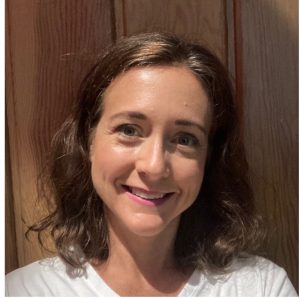Member Spotlight, Jenny Bossaller
In each issue of Inside ASIS&T, we ask a different member questions about their perspectives, advice, and experiences in the field of information science and technology. If you would like to be a featured member, email Pamela Yonker at pyonker@asist.org.
 Jenny Bossaller
Jenny Bossaller
Associate Professor
University of Missouri iSchool
How long have you been an ASIS&T member?
I first joined ASIST as a doctoral student in 2006. I joined because I was working with Sanda Erdelez on a project and she encouraged me to become involved, and I attended the SIG-USE preconference with her, and she introduced me to researchers in that area. I remember meeting Julie Hersberger, among others. Everyone was so passionate about their work, and that meeting and group made such an impression on me. It really changed my thoughts on what ASIST was about.
Do you have any advice for new ASIS&T members?
It can be sort of intimidating at first to get involved with a scholarly community, but it is really important to branch out beyond people who you work with, or who are at your university. The easiest way to do that is to become a member of a SIG (or more than one) that aligns with your interests, and then to go to their meetings. They are small and friendly, and they will give you a group of people to talk to or even present with at the annual meeting or in smaller SIG venues – online, etc. If you are in academia, you will likely need to list people who you feel could evaluate your Promotion and Tenure application, so it could literally pay to be visible. But more importantly, they’ll provide you with a scholarly community. The second piece of advice is to not be afraid to talk to people whose work you admire. You will run into them, and almost everyone enjoys knowing that you are interested in their work!
What is a project you are working on right now that excites you?
I have a few areas that I work in that sometimes overlap—across policy, history, and health, related to libraries and information. One project that I’m working on is with Bobbie Long and Emily Vardell at Emporia, about how public libraries can support people experiencing addiction or alcohol use disorder. We are combining various theories of behavioral health and change, trends within libraries of working with social workers, and traditional roles of libraries to create ways that libraries can integrate programs that will support people who want to explore alternative life paths, through connecting to others through learning circles.
What is the most important skill you have developed in your career?
Probably keeping myself parked in my chair until a bad first draft is done, and then listening and acting on constructive criticism, even if it’s a bitter pill to swallow.
What give me the most joy in information science?
I would say learning about how people are applying theories in their work. I really enjoy going to poster sessions and reading papers that combine ideas in novel ways. Jenna Hartel’s InfVideos are great – I just passed those along to a new PhD student and she was so happy about them (so, thanks, Jenna!).
Have you witnessed any noticeable shifts in the greater information science community?
I remember when I first joined ASIST I felt like there was more of a divide between information scientists and librarians, and now as the current History Committee chair, I’ve learned more about that. It’s fascinating to see that librarians were involved in ASIST from the beginning, and there are just so many different ways that information science can be studied and applied. It’s a broad field, made up of people from many subfields, and from academia, industry, and professions. It makes the Association rich, and when students go to conferences or read through ASIST publications, they can see that they have a lot of different options that they can take in their careers.
